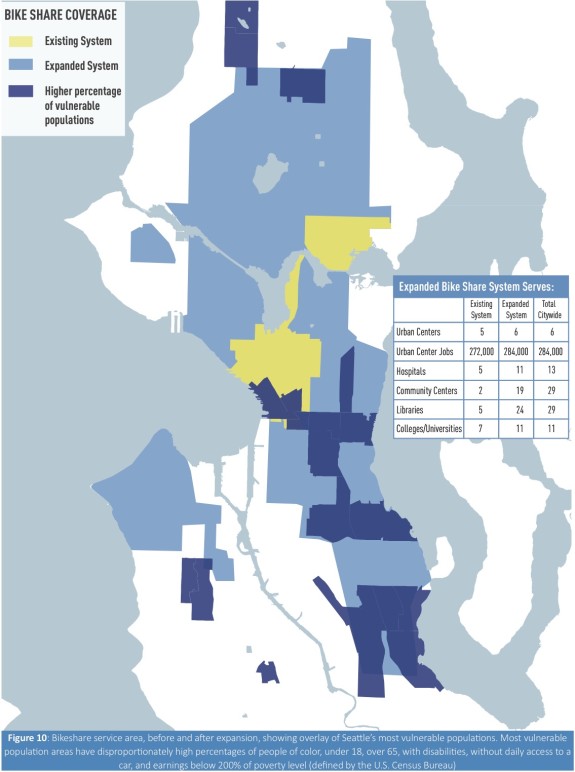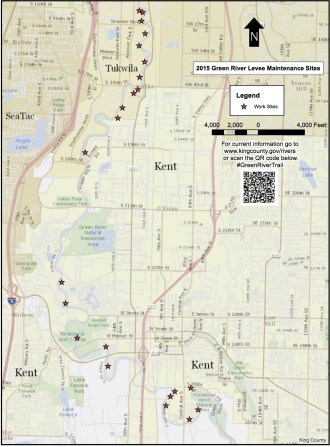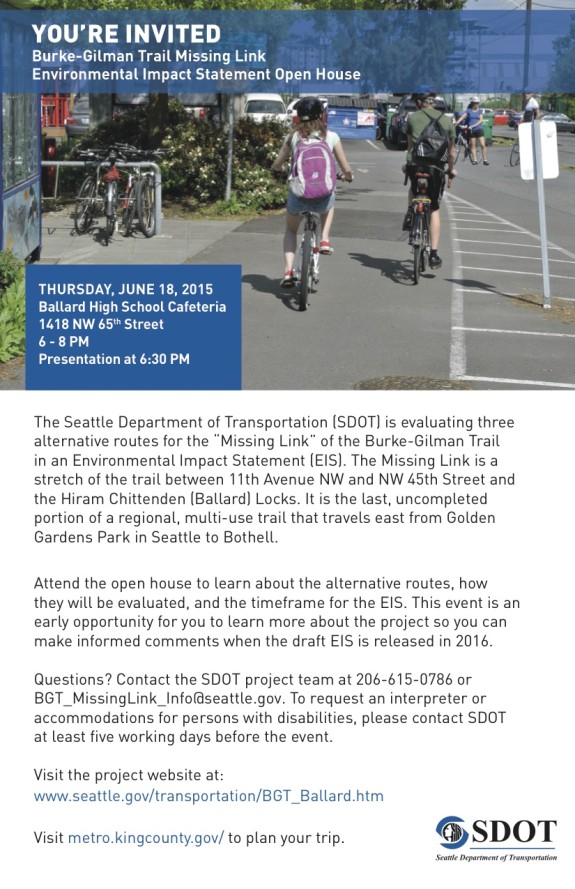
Pronto Cycle Share is an amazing transportation tool, but only if it’s limited service area fills a hole in your specific trip. If you live in the service area, it’s amazing. If you are headed to a city center destination that is an awkward distance from an express transit route, bike share can be a fast and easy way to cover that last piece of your trip.
But the biggest problem with Pronto is that the service area is simply too small to meet most people’s needs. And under the current business model, the system would expand slowly over time as more private sponsorship investments or city budget line items lead the way. It’s a plan that creates solid benefits for relatively little public investment, but it’s not a plan that can truly revolutionize transportation and low-income access to bicycling in Seattle.
That’s why the city has put together a visionary plan for a massive, fast expansion of Pronto that would increase the service area from five square miles to 42 square miles, reaching from Northgate to Rainier Beach to Alki. The number of stations would increase from 50 to 250, and the percentage of Seattle residents within walking distance of a station would go from 14 percent to 62 percent.
“Having a massive expansion of the bike share will make it really functional public transit,” said SDOT Director Scott Kubly. “Bike share is a great way to expand the reach of transit” because it helps connect more homes and destinations within reach of a high-quality express transit route. It’s a way to fill the “last mile” and “first mile” problems of transit trips, where slow local buses or long transfer waits make transit use less appealing and effective.
On top of all this, the city would also roll out electric assisted bikes in the fleet, which will be especially helpful for stations in very hilly areas and for users who have trouble climbing hills or going longer distances.
The e-bikes “will effectively flatten the city,” said SDOT Director Scott Kubly, and “open it up to people of different ages and abilities and different levels of fitness.” Kubly said studies looking at the effect of e-bikes in Norway showed that people took 50 percent more trips and traveled distances twice as far, an effect more pronounced in women. (more…)












